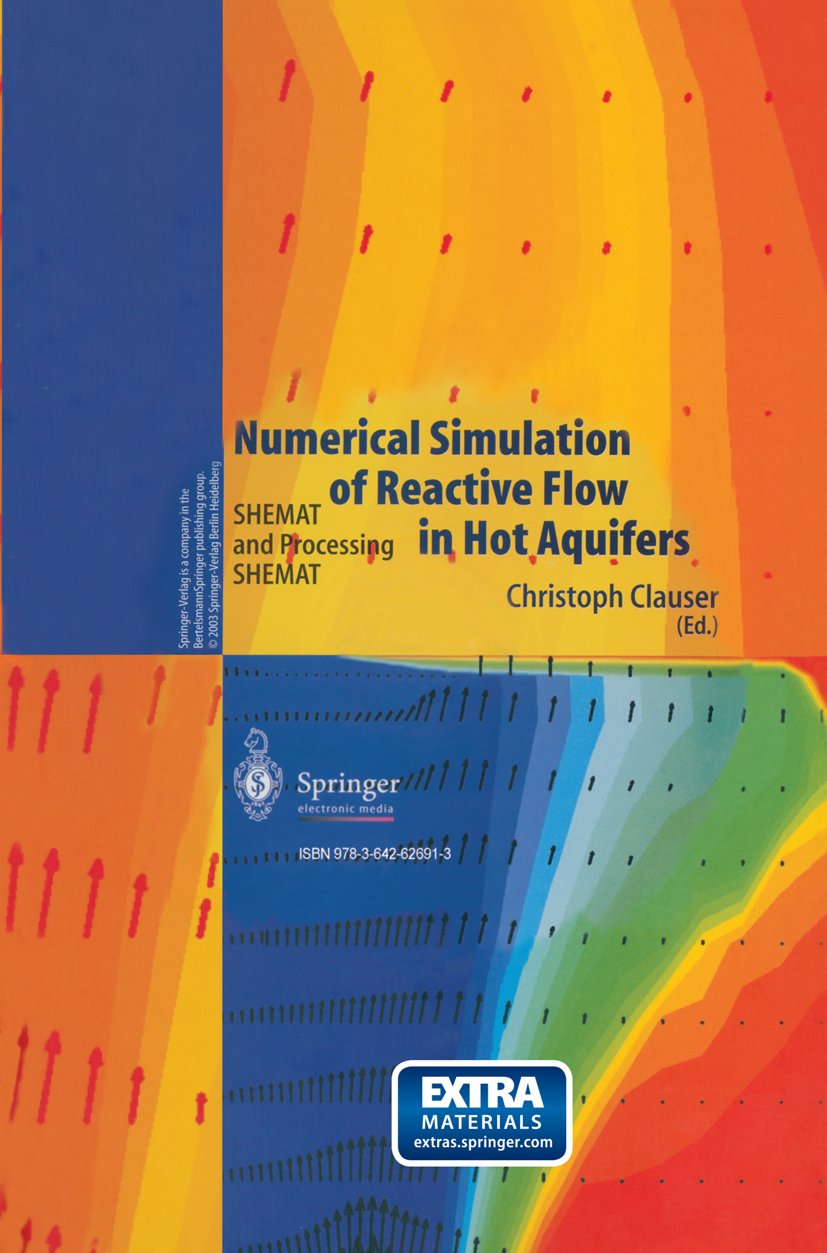Numerical Simulation of Reactive Flow in Hot Aquifers
by Christoph Clauser
2020-04-19 20:37:12
Numerical Simulation of Reactive Flow in Hot Aquifers
by Christoph Clauser
2020-04-19 20:37:12
Christoph Clauser and Jom Bartels SHE MAT (Simulator for HEat and MAss Transport) is an easy-to-use, general purpose reactive transport simulation code for a wide variety of thermal and hy drogeological problems in two and three dimensions. Speci...
Read more
Christoph Clauser and Jom Bartels SHE MAT (Simulator for HEat and MAss Transport) is an easy-to-use, general purpose reactive transport simulation code for a wide variety of thermal and hy drogeological problems in two and three dimensions. Specifically, SHEMAT solves coupled problems involving fluid flow, heat transfer, species transport, and chemical water-rock interaction in fluid-saturated porous media. It can handle a wide range of time scales. Therefore, it is useful to address both technical and geo logical processes. In particular, it offers special and attractive features for model ing steady-state and transient processes in hydro-geothermal reservoirs. This makes it well suited to predict the long-term behavior of heat mining installations in hot aquifers with highly saline brines. SHEMA T in its present form evolved from a fully coupled flow and heat transport model (Clauser 1988) which had been developed from the isothermal USGS 3-D groundwater model of Trescott and Larson (Trescott 1975; Trescott and Larson 1977). Transport of dissolved species, geochemical reactions between the solid and fluid phases, extended cou pling between the individual processes (most notably between porosity and per meability), and a convenient user interface (developed from Processing Modflow (Chiang and Kinzelbach 2001)) were added during several research projects funded by the German Science Foundation (DFG) under grant CL 12117 and the German Federal Ministries for Education, Science, Research, and Technology (BMBF) under grant 032 69 95A-D and for Economics and Technology (BMWi) under grant 0327095 (Bartels et al. 2002, Kuhn et al. 2002a).
Less































